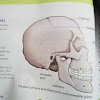Food
inters into the digestive tract through the oral cavity. The oral cavity
consists of many important structures like palate, tongue, teeth and opening of
salivary glands. Each part performs a specific function.
Four function are performed by the oral cavity.
1. Selection of Food
SELECTION OF FOOD
First
function of oral cavity is too select the food by taste. A food with bat taste
is rejected. In the selection of food sight and smell plat an important role. Social
and psychological factors are also involved in preferring a certain type of
food over the other.
GRINDING OF FOOD
Once
the food is inside the mouth cavity, it is subjected to the grinding action. Teeth,
tongue and cheeks all take part in the physical and quick breakdown of food into
smaller pieces. Enzymes can easily work on smaller food particles.
3 LUBRICATION AND DIGESTION
The process of lubrication and digestion starts as the food
is broken down into smaller pieces. Three pairs of the salivary glands secrete
saliva which has three ingredient;
1. Water
and mucus
2. Sodium
bicarbonate and other salts
3. Enzyme-Amylase
or ptyalin
Water And Mucus
Water and mucus together
make slimy liquid which mainly moistens and lubricates the ingested food. Thus food
can be chewed efficiently to allow the digestive juices to inter the food mass.
Sodium Bicarbonate
Sodium bicarbonate and
other salts stabilize the pH of the food although they are slightly antiseptic.
Fresh saliva is alkaline with a pH 8 but quickly loses carbon dioxide and gets
to pH6.
Amylase
Amylase (Ptyalin) is a
carbohydrate enzyme which hydrolyzes starch and glycogen to maltose. Thus softened,
partially digested food is now arranged into small oral lumps called boluses. The
boluses are pushed to pharynx by the combined efforts of the cheek muscles, the
floor of the buccal cavity and the tongue.





![How to new android update; [] Latest Version of Android](https://blogger.googleusercontent.com/img/a/AVvXsEiXrh_H1xc9pMCKPk7uCg3IcgEM-TvXSf_ijOtsicwbJBFUDiuJAR1qUS2IoEWHWZyYbR-EVrZK-fvVYMBPpV_7ObD5bVwK9dRkIFE3o9NpxESdGfPfGF6UOaxPV37AythWUkSspSV8jTwGTKaiZM-YHzcETXut9fEJr6PVqi8LvBxa8a3--KQVuL5OiA=w640)